This article comes fromMirrorThis article comes from
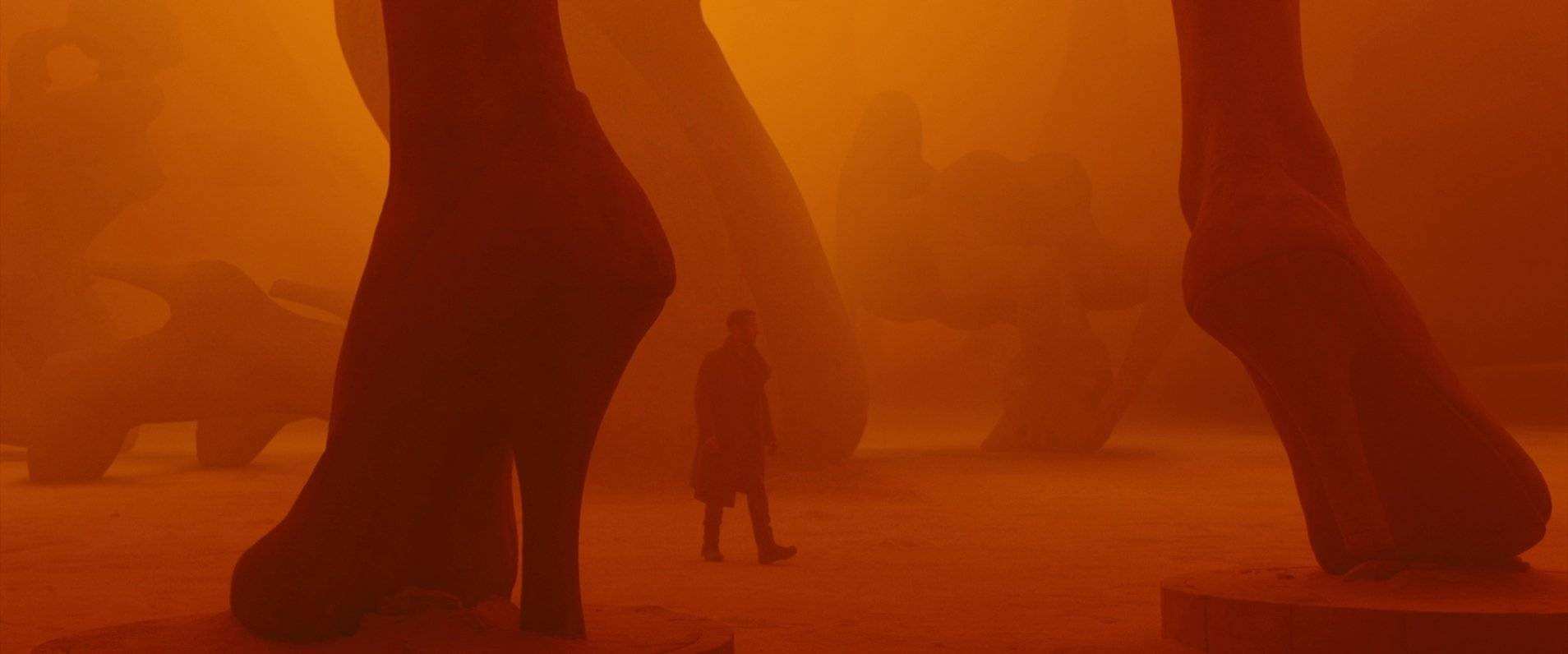
In most traditional games, defense and offense are the basic game mechanics for game players to interact with land resources. However, due to the special financial attributes of GameFi, the plots are often not fully involved in the gameplay. This article will briefly review the utility evolution process of the NFT of the plot, and analyze the relationship between the game mechanism design and the plot in the "earn while playing" GameFi project (metaverse platform).
secondary title
1. Sandbox game: display plots
At first, parcels were sold in sandbox games such as Sandbox and Decentraland, which provided players with a large degree of creativity and closely related to the core function of the Metaverse - emphasizing sociality and user-generated content (UGC). In sandbox games, plots are used to display high-end and rare goods, installations or buildings, so that art players can sell their art on the secondary market. The value of the plot is affected by the adjacent commercial area, so the plot will realize the advertising function like Times Square in the United States or be used to build a theme park in the future.
Although the plot is a static asset with limited interactive functions, it does not affect the game experience. Because in sandbox games, players are more concerned about identity and social activities, so the transaction of usernames in Decentraland has exploded.Sandbox will restrict the joining of players, and to a certain extent, encourage the participation of individual artists, but it limits the development of the guild economy, and lacks direct incentives for these players to actively participate in the game. Therefore, it is impossible for the land owner to earn more than the land and token appreciation.

Sandbox map
secondary title
2. Massively Multiplayer Online Role-Playing Game: Managing Lot
In MMORPGs led by Ember Sword and Mirandus games, plots can be a differentiating element of the gaming experience: random monsters, NPCs (non-player characters) and natural resources in remote locations . Bazaars and small guilds are concentrated in the suburbs, while the largest trading markets and guilds are concentrated in the cities. There are also more detailed parcel categories with different prices, such as kingdoms, capitals, and castles.
In addition to the various genres, the detailed premise and backstory make the plot assets meaningful. Players write stories about the game through the Discord channel, showing how the virtual world further deepens the sense of belonging to the plot.
In this game, the land owner can be quite flexible in asset disposal and participate in the game through land management. Whether it's improving infrastructure, collecting service taxes and tolls, or forming guilds to expand reputation, players will become more closely tied to the resources of their plots.Massively multiplayer online role-playing games combined with GameFi are superior to traditional games in terms of incentive mechanism and asset ownership, but considering the small crypto player base and long development cycle, it is best to wait until the game is launched to see what role the community will play.

image description
All the games mentioned above have one thing in common, that is, the owner of the plot can sit back and wait for the value of the plot to increase. Instead, the mechanical design of subsequent games is facilitated by subdividing player characters.
secondary title
3. Adventure Games: Empowering the Lot
In the action-adventure game "Mines of Dalarnia", block (planet) holders pledge $DAR to prevent the reduction of planetary resources and increase its attractiveness to attract other players to mine on their planets. Correspondingly, miner players need to pay mining rent and entry fees to planet owners. The economic system works efficiently, miners can mine resources and scarce equipment on different Odaily, and land owners actively participate in competition with other land owners.
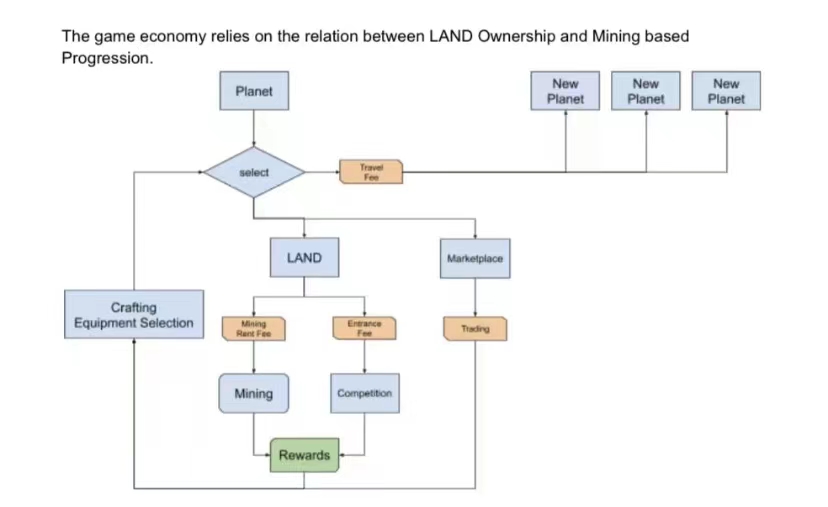
image description
Mechanics Explained for Mines of Dalarnia
Similar designs can be seen in multiplayer online adventure games. Some players can buy land licenses to become mine owners but cannot directly obtain resources unless recruiting other players as miners. The game tries to restore the era of the gold rush, and divides the player into seven roles, making the action more exciting and the corresponding rewards more generous.
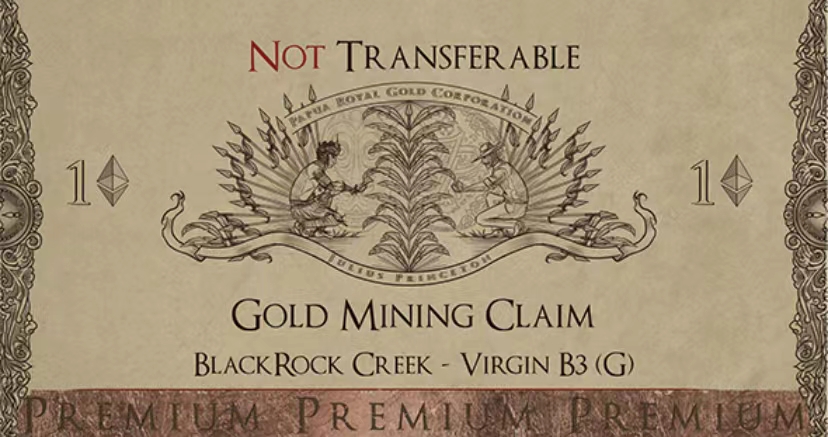
image description
Gold Fever Mineral Statement
Another example is the metaverse game Gotchiverse in the NFT platform Aavegotchi, which is an open social space based on Gotchi NFT, where players can participate in countless mini-games, where plot owners or Gotchi players need to strengthen their plots and build defenses structure to protect their resources from being collected by "Lickquidators" characters, NFTs will be distributed via airdrops to free-entry players, and plot owners will also need to step out to clear them. Thus, the game creates an asymmetrical arena that strengthens the cooperation between Gotchi players and plot owners, and attracts new players through the "Lickquidator", forming a strong in-game competition.
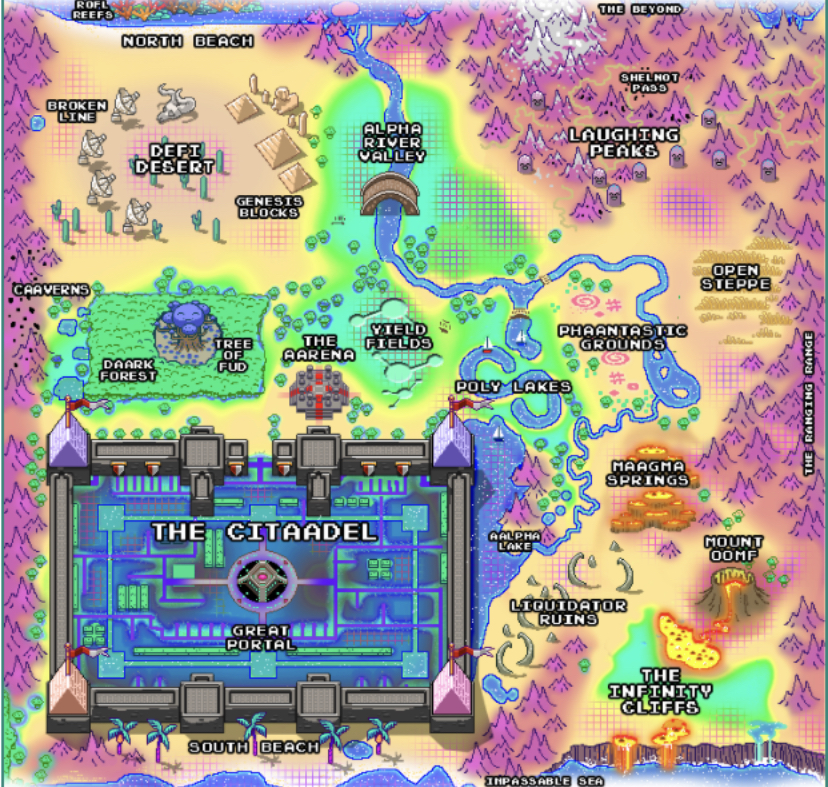
image description
Kingdom of AavegotchiReturn to the competitive nature of the game instead of exploiting hype and gambling psychology for profit.
secondary title
4. New application scenarios: Breaking land restrictions
4.1 The open world game "Vulcan Forged"
In addition to increasing staking rewards from plots, reward tokens are also burned, resulting in deflation.
On the surface, this mechanism encourages land owners to further expand their participation, tie themselves firmly to the land assets, and allow more participants to participate. But in the long run, if the team doesn't develop attractive features or limit withdrawals, the carnival dies in an instant because no one wants to be new.
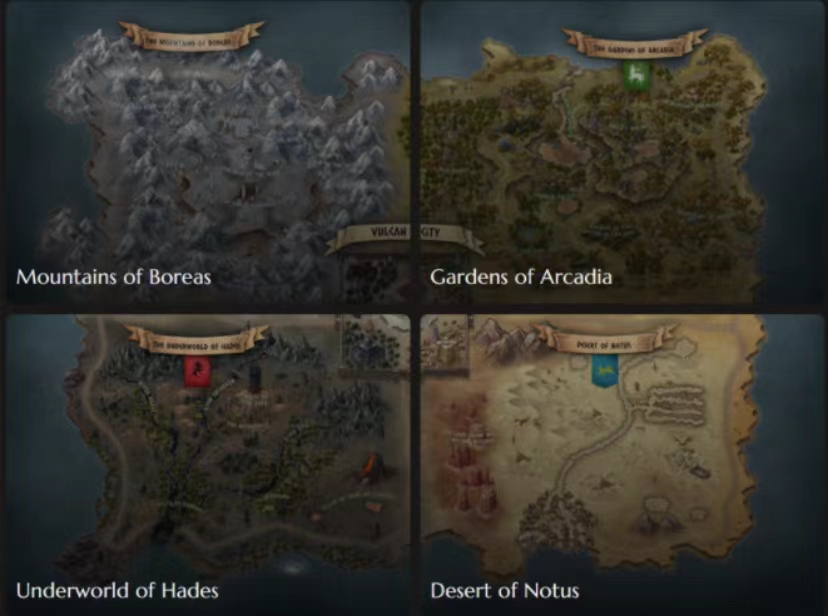
image description
Vulcan Forged map
The application of the plot is not limited to games like "Bloktopia", the purpose is to create a virtual social space, just as a game hall for entertainment in the building, while other spaces are more integrated into the social scene of the real world. The virtual building now houses content creators including Polygon and Avalanche, and on Nov. 2, KuCoin announced plans to create a virtual office in Bloktopia to chat and work in a virtual environment.

KuCoin Poster in the Bloktopia Metaverse
secondary title
5. Summary
In short, the application of plot NFT in GameFi can allow players to interact more with players and activate the community. The developers have perfected the player's functions and strengthened economic circulation and consumption. In addition, there are also projects that carry out in-depth design at the level of financial attributes of game assets to meet the needs of most players in the market and create wealth in a diversified and entertaining way.
This article mainly discusses the application of plot NFT in various GameFi projects, but GameFi is still in its infancy, and more applications will gradually be derived from playability and profitability, both of which have a lot of room for development.